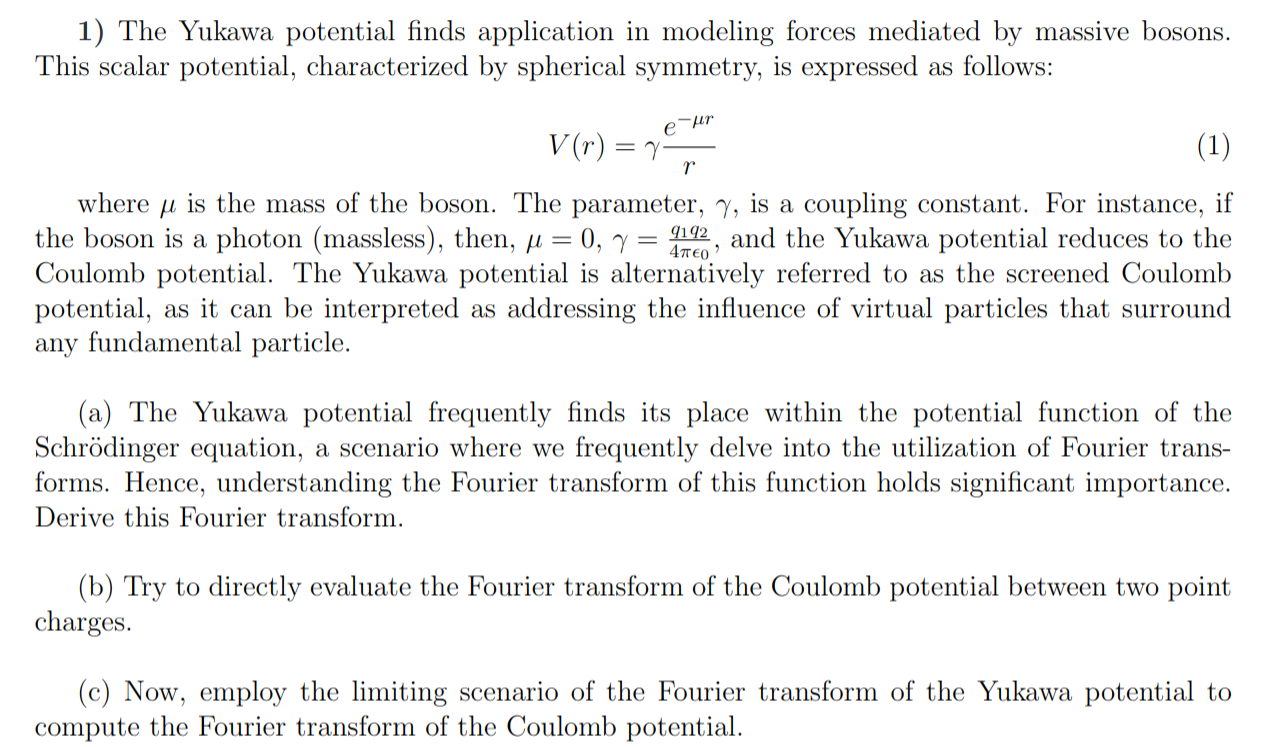Answered step by step
Verified Expert Solution
Question
1 Approved Answer
1) The Yukawa potential finds application in modeling forces mediated by massive bosons. This scalar potential, characterized by spherical symmetry, is expressed as follows:

1) The Yukawa potential finds application in modeling forces mediated by massive bosons. This scalar potential, characterized by spherical symmetry, is expressed as follows: -r V(r) = Y (1) where is the mass of the boson. The parameter, Y, is a coupling constant. For instance, if the boson is a photon (massless), then, 9192 = 0, y = and the Yukawa potential reduces to the Coulomb potential. The Yukawa potential is alternatively referred to as the screened Coulomb potential, as it can be interpreted as addressing the influence of virtual particles that surround any fundamental particle. (a) The Yukawa potential frequently finds its place within the potential function of the Schrdinger equation, a scenario where we frequently delve into the utilization of Fourier trans- forms. Hence, understanding the Fourier transform of this function holds significant importance. Derive this Fourier transform. (b) Try to directly evaluate the Fourier transform of the Coulomb potential between two point charges. (c) Now, employ the limiting scenario of the Fourier transform of the Yukawa potential to compute the Fourier transform of the Coulomb potential.
Step by Step Solution
There are 3 Steps involved in it
Step: 1
a To derive the Fourier transform of the Yukawa potential we start with the expression for the poten...
Get Instant Access to Expert-Tailored Solutions
See step-by-step solutions with expert insights and AI powered tools for academic success
Step: 2

Step: 3

Ace Your Homework with AI
Get the answers you need in no time with our AI-driven, step-by-step assistance
Get Started


